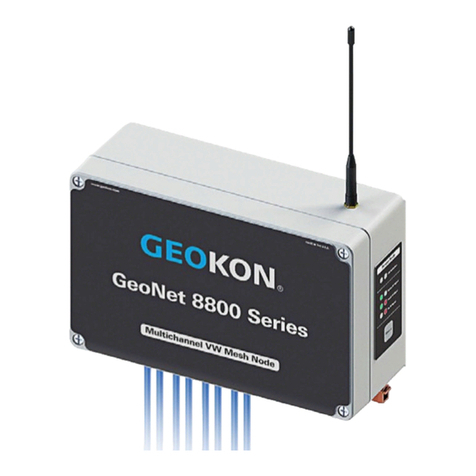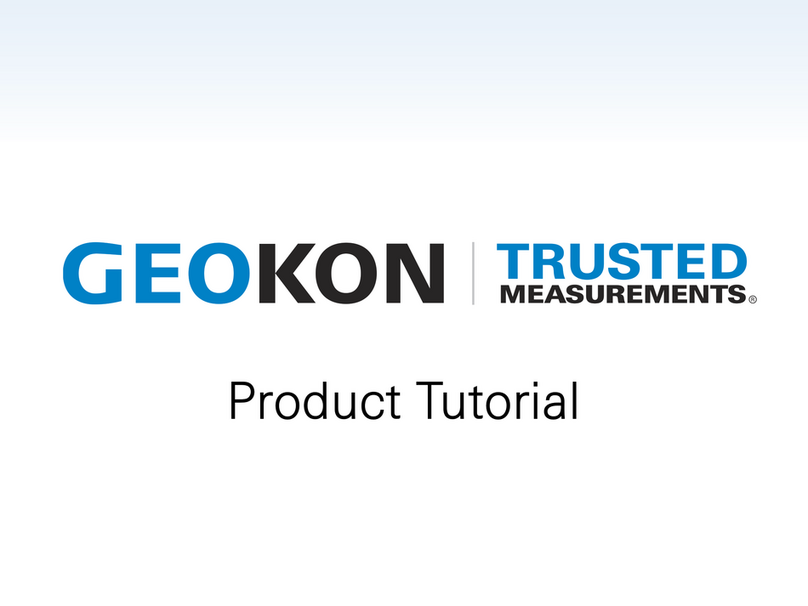
MODEL 8900 SERIES GEONET WIRELESS DATA HOSTING SYSTEM | QUICK START GUIDE | 4
3. Tighten the cover screws a little at a time, working in a diagonal pattern.
Important! Make sure the cover seals tightly and evenly.
1.2.4 SET THE NETWORK TIME
Cellular Gateway Supervisors set the network time automatically when they connect to the
cellular network. Non-cellular Supervisors must have their time set manually.
Note: The network will not begin collecting data until the network time is set.
Connect the Supervisor to the computer using the GEOKON-supplied USB cable. For RS-232
models, connect the USB cable using the GEOKON-supplied RS-232 adapter.
Use GEOKON’s data collection software, "Agent", to set the time.
Note: For details on setting up a Network in Agent, watch the Agent software tutorial or refer to
the Agent instruction manual.
1.2.5 VERIFY THE NETWORK TIME
Press the Status button to verify that the network time is set. The LEDs should flash both green
and red. If only the red LED flashes:
■For Cellular Gateway Supervisors, wait several minutes and try again.
■For non-cellular Supervisors, set the network time using Agent.
1.2.6 RECORD THE SUPERVISOR SERIAL NUMBER
The serial number of the Supervisor is required when using Agent software and when
commissioning the cellular gateway.
1.3 ACTIVATE THE NETWORK
1.3.1 POWER THE NODES
Power the Nodes in a manner similar to the process of powering the Supervisor. Do the
following:
■Move the battery select switch to either the ALKALINE or LITHIUM position depending on the
type of battery being used.
■Align the positive (+) side of the batteries with the +indicator in the battery holder. Push the
batteries straight down into the holder.
An LED will flash twice on the right side of the box indicating the unit has power.
1.3.2 VERIFY THE NETWORK CONNECTION OF THE NODES
If the Supervisor is in Deployment mode, the Nodes will join the network about 30 seconds after
power up, as indicated by the LED(s) on the Nodes flashing in unison with the Supervisor.
Verify that the LED indicators on the Nodes and the Supervisor are flashing green only. This may
take several minutes depending on network configuration.
2. DEPLOY THE NETWORK
2.1 MOUNTING THE DEVICES
The attached mounting bracket is designed to be used with U-bolts, hose clamps, screws, etc.
Mount each device vertically, with the antenna pointing up.
GEOKON recommends a mounting height of at least two meters. Lower than two meters may
compromise performance; as a rule, higher is usually better.



























